Five-lined Skink
- January 5, 2024
- 0 comment
The Five-lined Skink, scientifically known as Plestiodon fasciatus, is a captivating reptile that holds its own in the intricate tapestry of the natural world. One of its most distinctive features is the striking five-lined pattern adorning its sleek body, often showcasing vibrant hues of blue or yellow. These reptiles exhibit a range of size and shape variations, emphasizing their adaptability to diverse environments. Found in habitats ranging from forested areas to rocky landscapes, the Five-lined Skink boasts a considerable geographic distribution, contributing to its ecological significance.
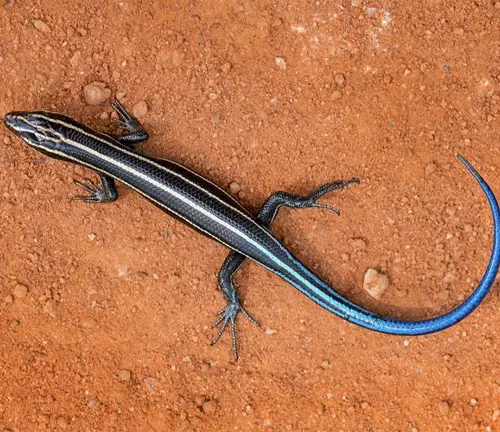
Whether displaying nocturnal or diurnal tendencies, these skinks engage in fascinating social interactions and mating rituals, offering a glimpse into the complex dynamics of their lives. Their diet, consisting mainly of insects and invertebrates, not only sustains them but also plays a crucial role in controlling local pest populations. Beyond their aesthetic appeal, the Five-lined Skink emerges as a key player in the delicate balance of ecosystems, underscoring the importance of understanding and preserving this remarkable species.
| Characteristic | Details |
|---|---|
| Scientific Name | Plestiodon fasciatus |
| Distinctive Feature | Five-lined pattern on sleek body (blue or yellow) |
| Size | Varies, with size and shape adaptations |
| Habitat | Diverse, including forests and rocky landscapes |
| Distribution | Wide geographic range |
| Activity | Nocturnal or diurnal tendencies |
| Social Behavior | Engages in social interactions and mating rituals |
| Diet | Insects and invertebrates |
| Ecological Role | Maintains balance by controlling pest populations |
| Adaptations | Camouflage techniques and defense mechanisms |
| Conservation Status | Faces threats, ongoing conservation efforts in place |
| Interaction with Humans | Common in urban areas, often misunderstood |
| Pet Trade | Attractive as a pet, requires responsible ownership |
| Cultural Significance | Various folklore and myths in different cultures |
| Photographic Appeal | Popular subject in wildlife photography |
| Contributions to Science | Contributes to reptile biology research |
Physical Characteristics
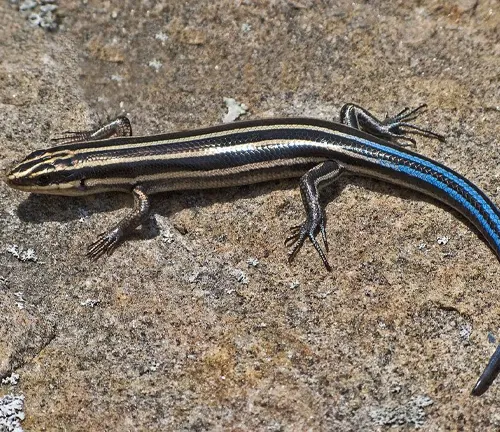
The Five-lined Skink, scientifically known as Plestiodon fasciatus, boasts a striking five-lined pattern running along its sleek body. These lines, often a vivid blue or yellow, create a visual spectacle in the reptile world. Size and shape variations exist, contributing to the skink’s adaptability to diverse environments.
Habitat and Distribution
These reptiles display a preference for specific environments, ranging from forested areas to rocky landscapes. Their distribution spans a considerable geographic range, highlighting their adaptability. Beyond their aesthetic appeal, Five-lined Skinks play a significant role in maintaining ecological balance.
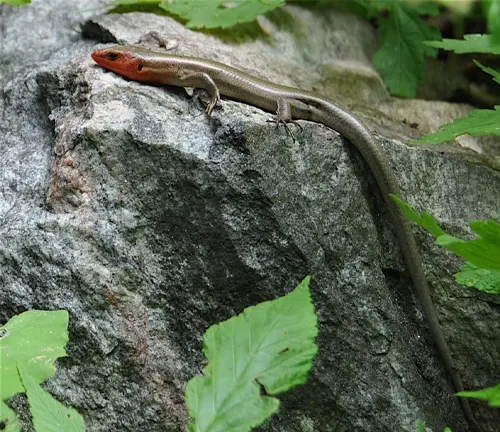

Behavior and Lifestyle
Nocturnal or diurnal, these skinks exhibit intriguing social behaviors and mating rituals. Their diet, comprising insects and invertebrates, further emphasizes their role in controlling local pest populations. Observing their behavior offers insights into the delicate balance of nature.
Adaptations to the Environment
To survive in their habitats, Five-lined Skinks employ various camouflage techniques and defense mechanisms. Understanding these adaptations provides a deeper appreciation for the intricate relationship between the species and its surroundings.
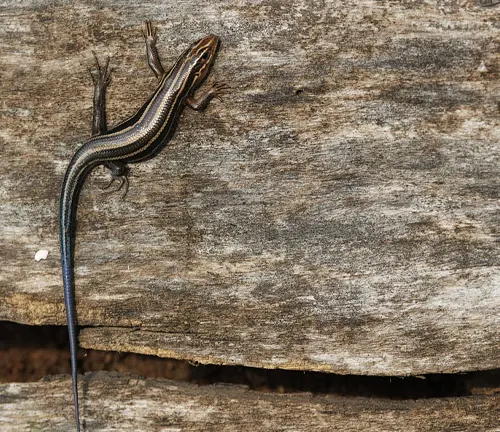
Importance in Ecosystem
As integral members of the food chain, these reptiles contribute to the overall biodiversity of their ecosystems. Recognizing their importance underscores the need for conservation efforts to maintain the delicate balance of nature.
Threats and Conservation
While the Five-lined Skink faces threats from human activities, ongoing conservation efforts aim to safeguard their populations. Individuals play a crucial role in supporting these initiatives, fostering a sense of responsibility for the well-being of these fascinating creatures.
Five-lined Skink and Humans
Interactions between Five-lined Skinks and humans are not uncommon, especially in urban areas. Dispelling common misconceptions and promoting educational initiatives are essential steps toward peaceful coexistence.
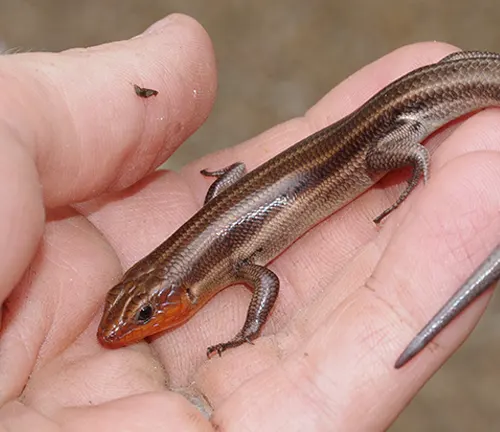
Popularization in Pet Trade
The allure of the Five-lined Skink as a pet comes with responsibilities. Understanding the legal aspects and regulations surrounding their ownership is vital to ensuring the well-being of these captivating reptiles.
Five-lined Skink in Cultural Context
Beyond biology, the Five-lined Skink holds cultural significance in various societies, with folklore and myths weaving stories around these enigmatic creatures. Promoting cultural awareness contributes to their conservation.
Connecting with Nature: Encounters with Five-lined Skinks
Personal anecdotes and experiences of encountering Five-lined Skinks in the wild evoke a sense of wonder and appreciation for the natural world. Readers are invited to share their own encounters, fostering a community of nature enthusiasts.
Different Species
Plestiodon fasciatus fasciatus
This is the nominate subspecies and is commonly found in the eastern United States. It features the characteristic five-lined pattern and exhibits variations in coloration.
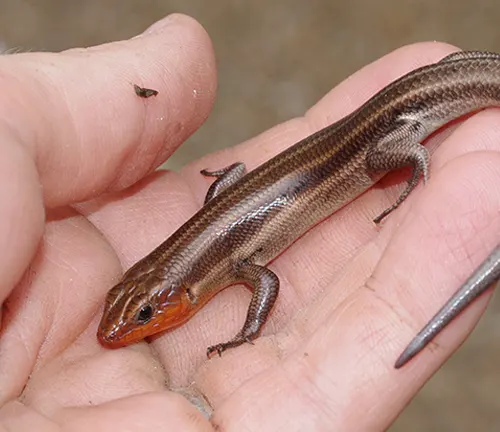
Plestiodon fasciatus laticeps
Known as the Broad-headed Skink, this subspecies is notable for its relatively larger head. It is found in the southeastern United States and shares the distinctive markings of the Five-lined Skink.

Plestiodon fasciatus bishopi
Referred to as the Florida Sand Skink, this subspecies is endemic to the sandy habitats of Florida. It is smaller in size compared to other subspecies and has adapted to its specific environment.

Plestiodon fasciatus sackenii
The Prairie Skink, as it is commonly called, inhabits the prairies and grasslands of the Midwest. It displays variations in coloration and markings, adapting to its open and sunny habitat.
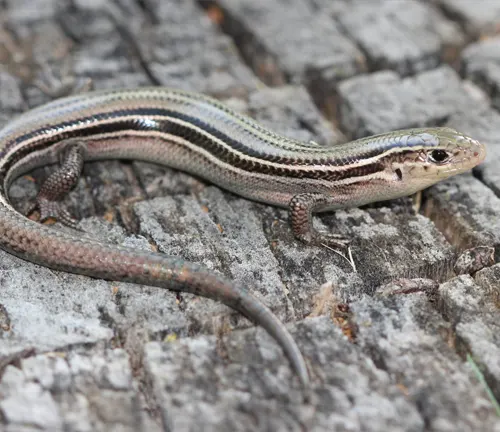
Plestiodon fasciatus alacarensis
Found in the southeastern United States, this subspecies is known as the Alabama Sand Skink. It showcases unique features and behaviors adapted to its sandy surroundings.

Frequently Asked Questions (FAQs)
- What is the natural habitat of the Five-lined Skink?
Five-lined Skinks are commonly found in a variety of habitats, including forests, grasslands, and rocky areas. - Are Five-lined Skinks venomous?
No, Five-lined Skinks are not venomous. They rely on other defense mechanisms, such as camouflage and speedy escapes. - Do Five-lined Skinks make good pets?
While some people keep them as pets, it’s essential to understand their specific needs and consider legal regulations regarding ownership. - How can I attract Five-lined Skinks to my backyard?
Creating a welcoming environment with suitable hiding spots, water sources, and insect-rich surroundings can attract Five-lined Skinks. - What threats do Five-lined Skinks face in the wild?
Threats include habitat loss, predation, and encounters with domestic animals. Conservation efforts aim to mitigate these challenges. - Can Five-lined Skinks regenerate their tails?
Yes, Five-lined Skinks can regenerate their tails as a defense mechanism. The regenerated tail may not have the same appearance as the original. - Do Five-lined Skinks hibernate?
In colder regions, Five-lined Skinks may hibernate during the winter months, seeking shelter in protected areas. - How long do Five-lined Skinks live in captivity?
In captivity, they can live up to 5-8 years with proper care, including a well-balanced diet and an appropriate habitat. - Are there any specific predators of Five-lined Skinks?
Predators include birds of prey, snakes, and mammals. Their protective coloration and behavior help them evade these threats. - Are Five-lined Skinks endangered?
While some subspecies may face localized threats, the overall Five-lined Skink is not considered endangered. Conservation efforts focus on protecting vulnerable populations. - Can Five-lined Skinks swim?
Yes, Five-lined Skinks are capable swimmers and may use water bodies for hunting or as a means of escape. - What is the reproductive behavior of Five-lined Skinks?
Five-lined Skinks reproduce by laying eggs, and the females typically choose well-hidden locations to deposit their eggs.


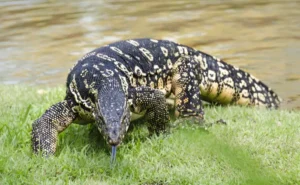
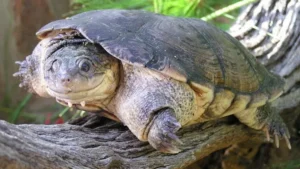
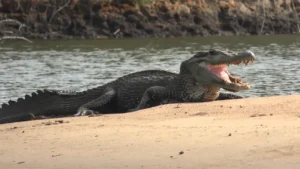



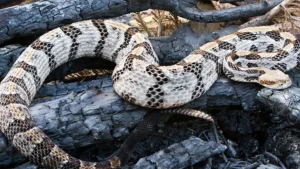

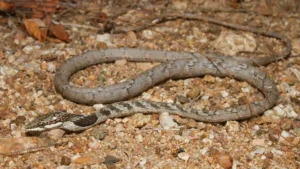
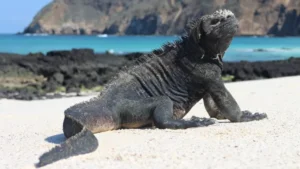
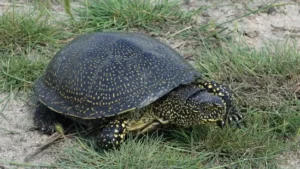
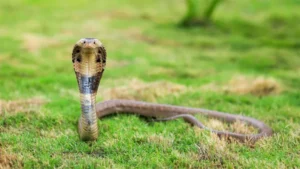
Leave your comment